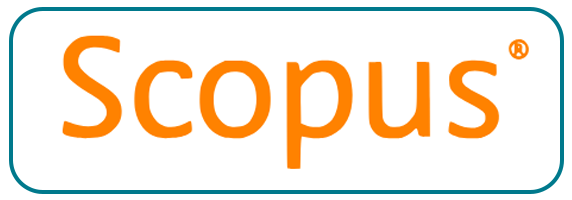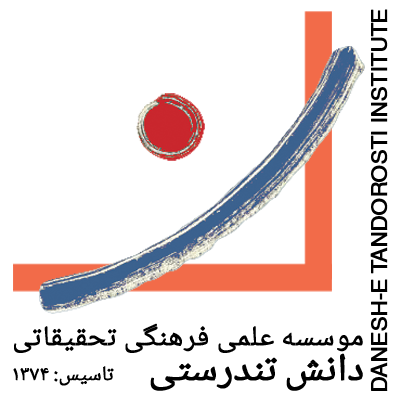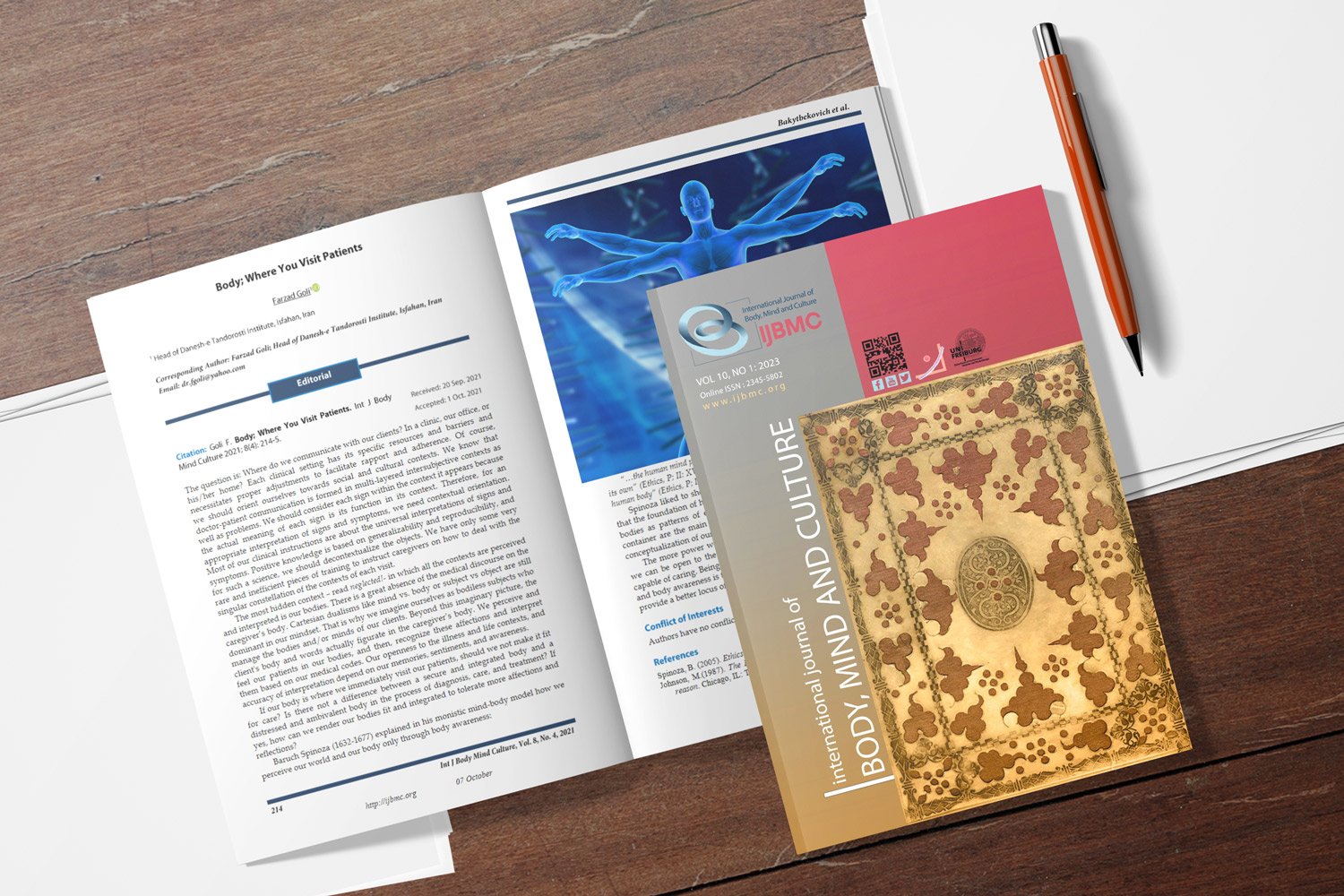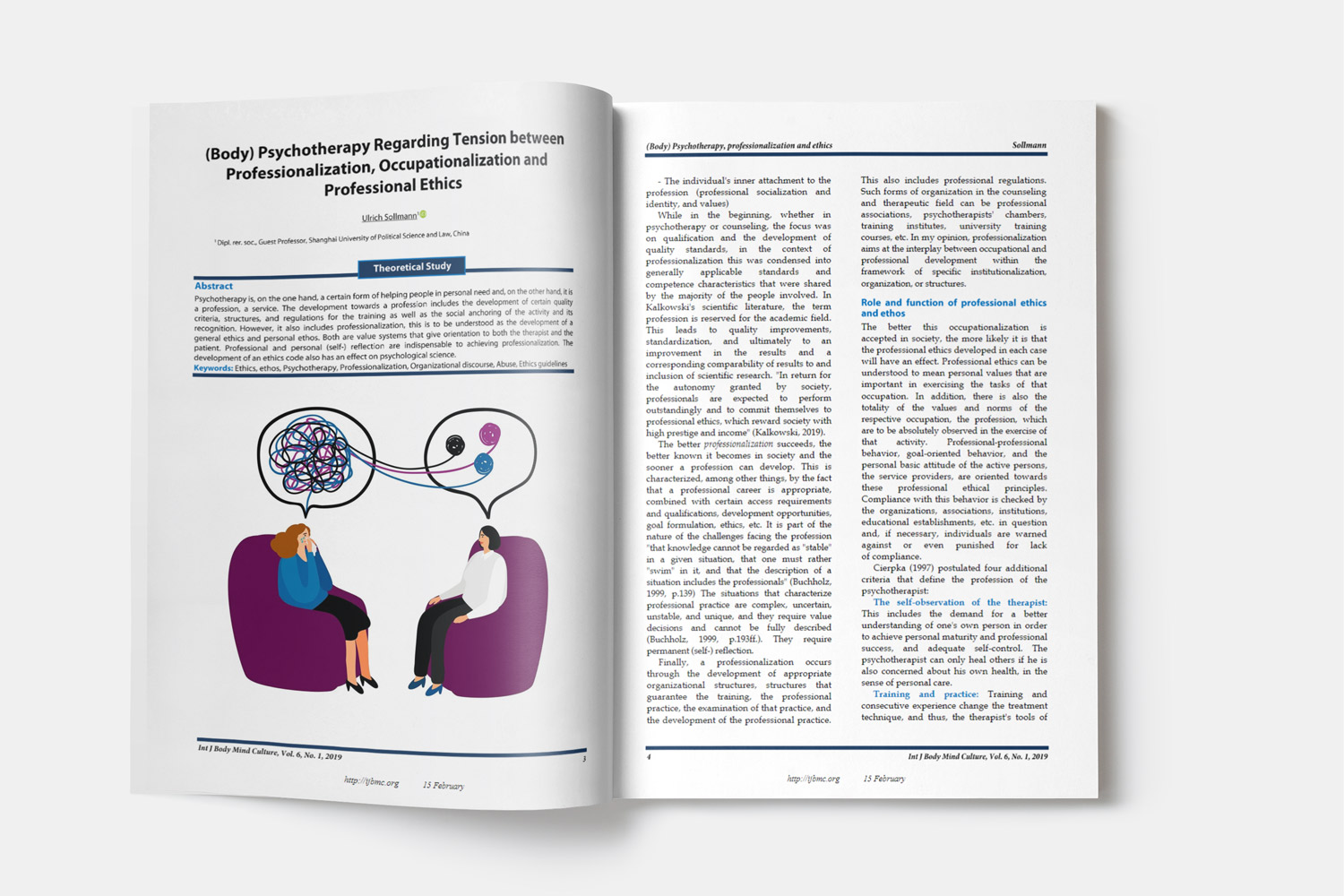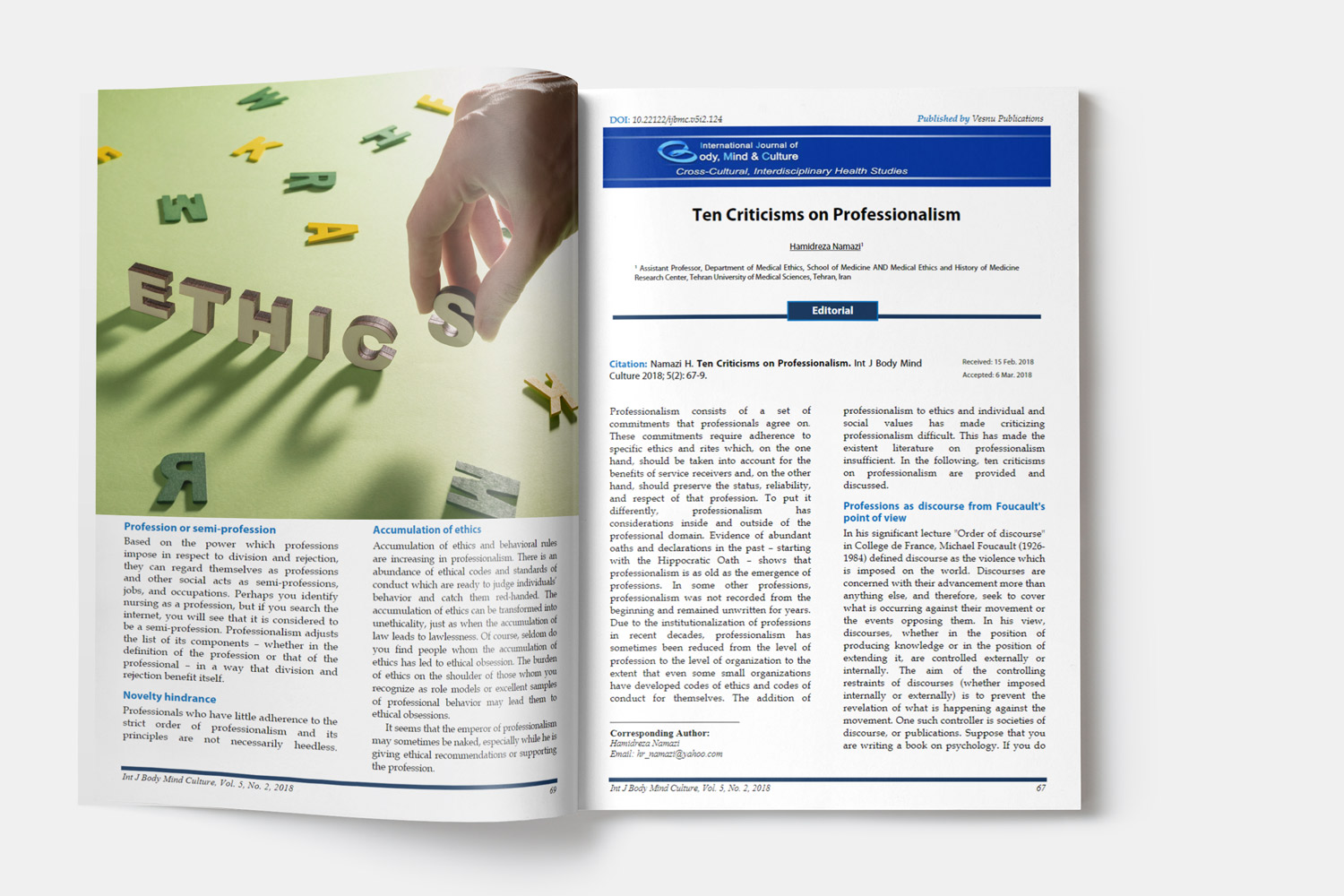Which Intervention is Most Effective? Rhythmic Breathing, Hugo Point Acupressure, and Vapocoolant Spray for Pain Relief During Needle Insertion in Hemodialysis Patients: A Randomized Controlled Trial
Downloads
Objective: Pain from needle insertion during hemodialysis is a common challenge that requires effective pain management to ensure patient comfort. This study aimed to compare the efficacy of three pain management techniques (rhythmic breathing, Hugo Point acupressure, and vapocoolant spray) on pain intensity during needle insertion in hemodialysis patients.
Methods and Materials: A randomized controlled trial was conducted from December 4, 2024, to January 16, 2025 in Iraq, involving 120 hemodialysis patients. Participants were randomly assigned to one of four groups: control (n=34), rhythmic breathing (n=24), Hugo Point acupressure (n=35), and vapocoolant spray (n=27). Pain intensity was assessed immediately after needle insertion using the Visual Analog Scale (VAS). The rhythmic breathing group practiced controlled breathing exercises 2 minutes before and during needle insertion, the Hugo Point acupressure group received acupressure 2 minutes before and during needle insertion, and the vapocoolant spray group received a brief application of the spray prior to the procedure. Data were analyzed using SPSS version 27, employing the Mann-Whitney U test, Kruskal-Wallis H test, one-way ANOVA, Pearson correlation, and Spearman correlation.
Findings: The mean pain intensity scores were highest in the control group (64.79 ± 15.8), followed by the rhythmic breathing group (37.79 ± 4.293), the Hugo Point acupressure group (33.14 ± 4.264), and the vapocoolant spray group (25.59 ± 3.6). All three interventions significantly reduced pain intensity compared to the control group (P < 0.001). The vapocoolant spray demonstrated the most significant pain reduction, followed by Hugo Point acupressure and rhythmic breathing (P < 0.001). Additionally, Hugo Point acupressure was significantly more effective than rhythmic breathing in reducing pain intensity (P < 0.001).
Conclusion: The findings indicate that rhythmic breathing, Hugo Point acupressure, and vapocoolant spray are all effective in reducing pain during needle insertion in hemodialysis patients. However, vapocoolant spray emerged as the most effective intervention, followed by Hugo Point acupressure and rhythmic breathing. These results suggest that vapocoolant spray should be considered the preferred pain management option, with Hugo Point acupressure as a secondary alternative and rhythmic breathing as a viable option for patients who may not tolerate or have access to the other interventions.
Downloads
Abas, A., & Mohammed, W. (2013). Effectiveness of Continuing Nursing Education Program on Nursing Staffs, Knowledge at Kidney Transplantation Units in Baghdad Teaching Hospitals. Iraqi National Journal of Nursing Specialties, 26(1), 25-32. https://doi.org/10.58897/injns.v26i1.158
Abbas Ali Madadi, Z., Azimian, J., Falahatpishe, F., & Alipour Heidari, M. (2017). Effect of warm footbath with vibration on arteriovenous fistula puncture-related pain in hemodialysis patients. International Journal of Research in Medical Sciences, 5(2), 631-635. https://doi.org/10.18203/2320-6012.ijrms20170165
Al-Jubouri, M. B., Jaafar, S. A., Abbas, M. K., Gazi, I. N., Shawwat, M. A., Karmoud, K. F., & Al-Faham, T. M. (2024). Using cryotherapy, EMLA (eutectic lidocaine/prilocaine) cream, or lidocaine spray to reduce pain during arteriovenous fistula puncture: A randomized controlled trial. Hemodialysis International, 270-277. https://doi.org/10.1111/hdi.13152
Al-Mussawi, G., & Al-Jubouri, M. B. (2024). Effect of Aromatherapy on Pain Intensity for Patients Undergoing Arterial Sheath Removal after Percutaneous Coronary Intervention: A Randomized Controlled Trial. Pakistan Journal of Life and Social Sciences, 22(1), 1427-1436. https://doi.org/10.57239/PJLSS-2024-22.1.0096
Al-Shammary, S. E., & Al-Fayyadh, S. (2024). The effectiveness of non-pharmacological interventions on reducing intramuscular injection-related pain in adult patients: a randomized control trial. Iraqi National Journal of Nursing Specialties, 37(1), 36-49. https://doi.org/10.58897/d17ypv79
Al-Shammiry, S. E., & Al-Fayyadh, S. (2024). Manual Pressure verses Shot Blocker in Reducing Intramuscular InjectionRelated Pain: A Comparative Randomized Controlled Trial. Bahrain Medical Bulletin, 46(1). https://www.bahrainmedicalbulletin.com/March_2024/BMB-23-512.pdf
Alipor, A., Yasari, F., Khodakarim, S., & Shokri, A. (2018). Epidemiologic pattern of patients with chronic renal failure and related factors in hemodialysis patients of Shahid Ayatollah Ashrafi Esfahani Hospital in Tehran in 2017. J Res Urol, 2(3), 13-19. https://doi.org/10.30699/jru.2.3.13
Alzaatreh, M. Y., & Abdalrahim, M. S. (2020). Management strategies for pain associated with arteriovenous fistula cannulation: An integrative literature review. Hemodial Int, 24(1), 3-11. https://doi.org/10.1111/hdi.12803
Anupreethi, S. (2018). A study to assess the effectiveness of cold application on arteriovenous fistula puncture pain among hemodialysis patients at Erode and Namakkal District Vivekanandha College of Nursing, Tiruchengode]. https://core.ac.uk/download/pdf/235671175.pdf
Arab, V., Bagheri-Nesami, M., Mousavinasab, S. N., Espahbodi, F., & Pouresmail, Z. (2017). Comparison of the Effects of Hegu Point Ice Massage and 2% Lidocaine Gel on Arteriovenous Fistula Puncture-Related Pain in Hemodialysis Patients: A Randomized Controlled Trial. Journal of caring sciences, 6(2), 141-151. https://doi.org/10.15171/JCS.2017.014
Arslan, D. E., & Akca, N. K. (2018). Pain following needle insertion into a hemodialysis fistula and influencing factors. International Journal of Caring Sciences, 11(3), 1662-1667. https://www.academia.edu/download/100189952/37_kilic_original_113.pdf
Babamohamadi, H., Ameri, Z., Asadi, I., & Asgari, M. (2022). Comparison of the Effect of EMLATM Cream and the Valsalva Maneuver on Pain Severity during Vascular Needle Insertion in Hemodialysis Patients: A Controlled, Randomized, Clinical Trial. Evidence-Based Complementary and Alternative Medicine, 1-9. https://doi.org/10.1155/2022/8383021
Baloochi Beydokhti, T. (2021). A comparative study on the effects of acupressure at SP6 and ST36 acupoints on the pain caused by fistula needle placement in hemodialysis patients. Complementary Medicine Journal, 10(4), 354-367. https://doi.org/10.32598/cmja.10.4.975.1
Barbour, T., O'Keefe, S., & Mace, S. E. (2017). Patient and Health Care Provider Responses from a Prospective, Double-Blind, Randomized Controlled Trial Comparing Vapocoolant Spray versus Placebo Spray in Adults Undergoing Venipuncture in the Emergency Department. Pain Management Nursing. https://doi.org/10.1016/j.pmn.2017.09.006
Basal, A. A., & Okasha, K. (2013). Effect of cryotherapy on pain intensity at puncture sites of arteriovenous fistula among adult patients undergoing hemodialysis at Tanta university hospital. Tanta Scientific Nursing Journal, 5, 27-42. https://doi.org/10.21608/tsnj.2013.74467
Beydokhti, T., & Sajjadi, M. (2023). Comparing Effects of Rhythmic Breathing and Lidocaine Spray on Pain Intensity During Needle Insertion into Arteriovenous Fistula in Hemodialysis Patients: A Randomized Controlled Trial. Anesthesiology and Pain Medicine, 13(2). https://doi.org/10.5812/aapm-126384
Borzou, S., Felegari, G., & Turkman, B. (2002). Survey effect of rhythmic breathing on the intensity of pain in post orthopedic surgery patients. Scientific Journal of Kurdistan University of Medical Sciences, 6(23), 6-10. https://www.sid.ir/paper/69134/en
Borzou, S. R., Akbari, S., Falahinia, G. H., & Mahjub, H. (2013). Effect of Rhythmic Breathing on Pain Intensity during Insertion of Vascular Needles in Hemodialysis Patients. Hayat, 19(4). https://search.ebscohost.com/login.aspx?direct=true&profile=ehost&scope=site&authtype=crawler&jrnl=17352215&AN=95690530&h=g784Z5xZGnO1uLDPctpm9XvYy7NSOO7Nu6E8Iu2LN42xfRd%2FyHtnUV4K%2BAO7YIBSOPkda6q1M3SLVuBmLxWpAA%3D%3D&crl=c
Bozorg-Nejad, M., Azizkhani, H., Mohaddes Ardebili, F., Mousavi, F., Manafi, F., & Hosseini, A. F. (2018). The effect of rhythmic breathing on pain of dressing change in patients with burns referred to Ayatollah Mousavi Hospital. World Journal of Plastic Surgery, 7(1), 51-57. https://pmc.ncbi.nlm.nih.gov/articles/PMC5890366/
Brown, R. P., Gerbarg, P. L., Hoseini, T., Golaghaie, F., & Khosravi, S. (2019). Sudarshan kriya yogic breathing in the treatment of stress, anxiety, and depression: Part I-neurophysiologic model Comparison of two distraction methods on venipuncture pain in children. The Journal of Alternative and Complementary Medicine, 22(3), 27-35. https://www.liebertpub.com/doi/abs/10.1089/acm.2005.11.711
Çelik, G., Ozbek, O., Yilmaz, M., Duman, I., Ozbek, S., & Apiliogullari, S. (2011). Vapocoolant Spray vs Lidocaine/Prilocaine Cream for Reducing the Pain of Venipuncture in Hemodialysis Patients: A Randomized, Placebo-Controlled, Crossover Study. International Journal of Medical Sciences, 8(7), 623-627. https://doi.org/10.7150/IJMS.8.623
Collado-Mesa, F., Net, J. M., Arheart, K., Klevos, G., & Yepes, M. (2015). Application of a topical vapocoolant spray decreases pain at the site of initial intradermal anaesthetic injection during ultrasound-guided breast needle biopsy. Clinical Radiology, 70(9), 938-942. https://doi.org/10.1016/j.crad.2015.04.013
da Silva, O. M., Rigon, E., Dalazen, J. V. C., Bissoloti, A., & Rabelo-Silva, E. R. (2016). Pain during arteriovenous fistula cannulation in chronic renal patients on hemodialysis. Open Journal of Nursing, 6, 1028-1037. https://doi.org/10.4236/ojn.2016.612098
Elhalafawy, S. (2020). Effect of cryotherapy versus aromatherapy on pain of arteriovenous fistula puncture for children undergoing hemodialysis. IOSR Journal of Nursing and Health Science, 9(1), 9-19. https://doi.org/10.9790/1959-0901100919
Farzin Ara, F., Zare, M., Mousavi Garmaroudi, M., Behnam Vashani, S., & Talebi, S. (2018). Comparative study of the effect of Allah's recitation and rhythmic breathing on postoperative pain in orthopedic patients. Anesthesiology and Pain (JAP), 9(1), 68-78. https://www.sid.ir/paper/216304/en
Firdaus, R., Sukmono, B., Melati, A. C., & Marzaini, B. D. (2018). Comparison between Vapocoolant Spray and Eutectic Mixture of Local Anesthetics Cream in Reducing Pain during Spinal Injections. Anesthesiology Research and Practice, 2018, 5050273. https://doi.org/10.1155/2018/5050273
Ghadimi, M., Rejeh, N., Heravi-Karimooi, M., & Tadrisi, S. D. (2019). The effect of audio distraction technique on the intensity of pain caused by the insertion of dialysis needles in hemodialysis elderly patients. Iranian Journal of Nursing Research, 13(6). http://ijnr.ir/browse.php?a_id=2106&sid=1&slc_lang=en
Ghafourifard, M., Aghajanloo, A., Haririan, H., & Gheydari, P. (2016). Comparison of the effects of cryotherapy and placebo on reducing the pain of arteriovenous fistula cannulation among hemodialysis patients: A randomized control trial. Journal of Nursing and Midwifery Sciences, 3(1). https://doi.org/10.18869/acadpub.jnms.3.1.59
Goddard, G., & Albers, D. (2009). Effects of acupuncture at Large Intestine 4 (LI 4) on electrical tooth pulp stimulation: A randomized controlled pilot study. Medical Acupuncture, 21(3), 167-171. https://doi.org/10.1089/acu.2009.0691
Golda, M., Revathi, D., Subhashini, N., Mathew, J., & Indira, A. (2016). Assess the effectiveness of cold application on pre procedure (AV fistula puncture) pain among hemodialysis patients in tertiary care hospital, Nellore. International Journal of Applied Research, 2(6), 660-664. https://www.academia.edu/download/116645026/2_5_100_307.pdf
Gouda, K., El said, T., & Fahmy, S. F. (2023). The effect of cold packs, lidocaine spray, and flashlights on cannulation pain in patients undergoing hemodialysis: a randomized controlled trial. Future Journal of Pharmaceutical Sciences, 9. https://doi.org/10.1186/s43094-023-00539-4
Griffith, R. J., Jordan, V., Herd, D., Reed, P. W., & Dalziel, S. R. (2016). Vapocoolants (cold spray) for pain treatment during intravenous cannulation. Cochrane Database of Systematic Reviews, 4(4), CD009484. https://doi.org/10.1002/14651858.CD009484.pub2
Hamidzadeh, A., Shahpourian, F., Orak, R. J., Montazeri, A. S., & Khosravi, A. (2012). Effects of LI4 acupressure on labor pain in the first stage of labor. Journal of Midwifery & Women’s Health, 57(2), 133-138. https://doi.org/10.1111/j.1542-2011.2011.00138.x
Hogan, M. E., Smart, S., Shah, V., & Taddio, A. (2014). A systematic review of vapocoolants for reducing pain from venipuncture and venous cannulation in children and adults. Journal of Emergency Medicine, 47(6), 736-749. https://doi.org/10.1016/j.jemermed.2014.06.028
Hosseinzadeh, F., Alaee, N., Rejeh, N., & Alemohammad, S. (2019). Comparing the effect of cryotherapy and acupressure on pain intensity of arteriovenous fistula cannulation in patients hemodialysis. Iranian Journal of Nursing Research, 14(3). http://ijnr.ir/browse.php?a_code=A-10-4576-1&sid=1&slc_lang=en&ftxt=1&pure_pdf=1
Ichihashi, S., Higashiura, W., Itoh, H., Sakaguchi, S., & Kichikawa, K. (2012). Fracture and collapse of balloon-expandable stents in the bilateral common iliac arteries due to shiatsu massage. Cardiovascular and Interventional Radiology, 35, 1500-1504. https://doi.org/10.1007/s00270-011-0336-2
Jafarimanesh, H., Hajiaghaee, R., Mehrabi, F., Hasanbig, M. M., Alimoradian, A., & Ranjbaran, R. (2017). Comparative effects of quinine plant and lidocaine on pain of venipuncture. Complementary Medicine Journal, 7(1), 1777-1790. http://cmja.arakmu.ac.ir/browse.php?a_id=468&sid=1&slc_lang=en
Khalel, M., & Shawq, A. H. (2024). Effect of Music Medicine Intervention on Child's Pain Level During Bone Marrow Aspiration and Lumber Puncture Procedures. Iraqi National Journal of Nursing Specialties, 37(1), 103-111. https://doi.org/10.58897/99mxqa51
Khosravi Pour, A., Hejazi, S. S., Kameli, A., Hoseini Azizi, T., Armat, M. R., & Eshghi, M. (2023). Cooling spray or lidocaine spray and needle insertion pain in hemodialysis patients: an open-label cross-over randomized clinical trial. BMC Anesthesiology, 23(1). https://doi.org/10.1186/s12871-023-02028-w
Kim, M., & Kim, J. (2021). Effects of acupressure on pain, flexibility, and substance P in middle-age women with chronic neck pain. The Journal of Alternative and Complementary Medicine, 27(2), 160-167. https://doi.org/10.1089/acm.2020.0413
Koushki, B., Khajeh, M., Bagheri, H., Talebi, S. S., & Ebrahimi, H. (2023). Comparing the Effect of Local Application of Peppermint and Cold Compresses on the Severity of Pain from Venipuncture in Dialysis Patients: A Parallel Randomized Clinical Trial Study. Saudi Journal of Kidney Diseases and Transplantation, 34(4), 288-296. https://doi.org/10.4103/1319-2442.395444
Lalegani, H., Safar, A., & Safdari, A. (2014). The effect of breathing techniques on pain intensity of burn dressing. Journal of clinical nursing, 2(4), 61-68. https://www.sid.ir/paper/247069/en
Malayjerdy, Z., Mazlom, S. R., & Malekzadeh, J. (2019). Effect of Mirror Therapy on Arteriovenous Fistula Cannulation-Related Pain Severity in Hemodialysis Patients. Evidence Based Care, 9(2), 31-37. https://doi.org/10.22038/EBCJ.2019.35641.1918
Mirtajadini, H., Kalroozi, F., & Pishgooei, A. (2016). Shiatsu massage and the pain intensity of venipuncture in patients undergoing hemodialysis. Military Caring Sciences, 3(1), 27-33. https://doi.org/10.18869/acadpub.mcs.3.1.27
Namazinia, M. (2024). Effects of virtual reality on pain induced by arteriovenous fistula needle insertion in patients undergoing hemodialysis: A randomized clinical trial. The Journal of Vascular Access. https://doi.org/10.1177/11297298231225755
Öztürk, D., Baykara, Z. G., Karadag, A., & Eyikara, E. (2017). The effect of the application of manual pressure before the administration of intramuscular injections on students' perceptions of postinjection pain: a semi-experimental study. Journal of Clinical Nursing, 26(11-12), 1632-1638. https://doi.org/10.1111/jocn.13530
Park, E., Oh, H., & Kim, T. (2013). The effects of relaxation breathing on procedural pain and anxiety during burn care. Burns, 39(6), 1101-1106. https://doi.org/10.1016/j.burns.2013.01.006
Puangrab, S., Tawanwongsri, W., Mordmuang, A., Khocharoen, W., & Krainukun, P. (2024). Efficacy of topical local anesthetic, topical cooling spray, and audiovisual distraction on relief of needle-related pain during blood collection: A randomized controlled trial. Advances in Clinical and Experimental Medicine, 34(5). https://doi.org/10.17219/acem/188106
Rajabzadeh Malayjerdy, Z., Mazlom, S. R., & Malekzadeh, J. (2019). effect of mirror therapy on arteriovenous fistula cannulation-related pain severity in hemodialysis patients. Evidence Based Care Journal, 9(2), 31-37. https://ebcj.mums.ac.ir/http:/ebcj.mums.ac.ir/article_13274.html
Sabitha, P. B., Khakha, D. C., Mahajan, S., Gupta, S., Agarwal, M., & Yadav, S. L. (2008). Effect of cryotherapy on arteriovenous fistula puncture-related pain in hemodialysis patients. Indian Journal of Nephrology, 18, 155-158. https://doi.org/10.4103/0971-4065.45290
Sasha, I. A. (2024). Comparing the Effect of Cryotherapy on Hugo Point and Needle Insertion Site on the Pain of Arteriovenous Fistula Cannulation in Patient with Hemodialysis. Journal of Clinical Care and Skills, 5(2), 85-91. https://doi.org/10.58209/jccs.5.2.85
Satav, K. A., & Biradar, V. S. (2023). The Effect of Cryotherapy on Arterio-Venous Fistula Puncture Related Pain among Hemodialysis Patients at Selected Hospital in City. https://www.researchgate.net/profile/Vishwanath-Biradar-4/publication/387466796_The_Effect_of_Cryotherapy_on_Arterio_-_Venous_Fistula_Puncture_Related_Pain_among_Hemodialysis_Patients_at_Selected_Hospital_in_City/links/67751959e74ca64e1f401bbd/The-Effect-of-Cryotherapy-on-Arterio-Venous-Fistula-Puncture-Related-Pain-among-Hemodialysis-Patients-at-Selected-Hospital-in-City.pdf
Shabandokht-Zarmi, H., Bagheri-Nesami, M., Shorofi, S. A., & Mousavinasab, S. N. (2017). The effect of self-selected soothing music on fistula puncture-related pain in hemodialysis patients. Complementary Therapies in Clinical Practice, 29, 53-57. https://doi.org/10.1016/j.ctcp.2017.08.002
Shiasi, F., & Yousefi, M. R. (2021). The study of pain types, its inhibitory methods and tens effect on pain. J Intel Procedures Journal of Intelligent Procedures in Electrical Technology, 12(45), 17-33. https://research.iaun.ac.ir/pd/mr-yousefi/pdfs/PaperM_4310.pdf
Shnishil, A., & Mansour, K. (2013). Assessment of patients' satisfaction toward nursing care at hemodialysis units. Iraqi National Journal of Nursing Specialties, 26(1), 1-9. https://doi.org/10.58897/injns.v26i1.154
Tran Thi, T. H., Konara Mudiyanselage, S. P., & Huang, M. C. (2022). Effects of Distraction on Reducing Pain During Invasive Procedures in Children with Cancer: A Systematic Review and Meta-Analysis. Pain Management Nursing, 23(3), 281-292. https://doi.org/10.1016/j.pmn.2021.12.002
Unal, N., Tosun, B., Aslan, O., & Tunay, S. (2021). Effects of Vapocoolant Spray Prior to SC LMWH Injection: An Experimental Study. Clinical Nursing Research. https://doi.org/10.1177/1054773818825486
Copyright (c) 2025 International Journal of Body, Mind and Culture

This work is licensed under a Creative Commons Attribution-NonCommercial 4.0 International License.

